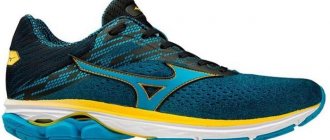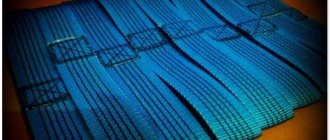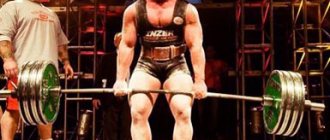Athletes-runners are divided into two types: some, with the arrival of winter, move to gyms and begin to “make friends” with the treadmill, while others are happy to plan their winter runs outside, build routes and insulate themselves. It is for these people that this article has been prepared. We will tell you how to choose the right clothes for running based on air temperature, precipitation, wind and other natural conditions, and we will also tell you how to do this taking into account your characteristics and preferences.
It is impossible to give domestic runners a monosyllabic answer to the question “how to dress for a run in winter.” Russia is a huge country, winter is striking in its diversity. Moreover, athletes from different areas have their own experience of running in winter conditions, each with their own idea of what cold is. Also, do not forget about the individual characteristics of people and their personal perception of cold. For some runners, a drop in temperature of +5°C is a reason to stop training outdoors, while others happily breathe in the frosty air on a run in -15°C. To the great joy of everyone, it is now not a problem to purchase equipment that allows you to run even in extremely low temperatures down to -35°C. The main thing is to choose the right clothes, and then you will not only enjoy, but also benefit from winter running.
What to look for when choosing running clothes?
High heat transfer zones
During physical activity, the rate of blood circulation in the body increases, the pulse rises, and the process of thermoregulation begins. There are areas on our body that especially actively give off excess heat: forehead, neck-collar area, armpits, solar plexus, lower back. It is in these areas of the body that the most profuse sweating occurs.
Hands, inner sides of elbows and knees, groin area, feet also have increased heat transfer, but do not emit as much sweat.
Manufacturers of sportswear take into account the above-mentioned characteristics of the human body, therefore they produce specialized clothing that is ideal for active physical activity. Such clothing has special ventilated areas adjacent to areas of increased heat transfer in humans, so it removes excess moisture, preventing clothing from getting wet.
Layering of equipment
You need to understand the significant difference between wearing a T-shirt and a thick down jacket or several layers of special runner's equipment for a run in the cold. In the first case, you will sweat very quickly, the jacket will not be able to remove excess moisture, and as a result you will freeze and be forced to return home. It’s good if you don’t catch a cold after such an adventure. In the second case, you can easily cover the route without the risk of freezing and getting sick. Hence the most important rule: a runner’s equipment must be multi-layered, and each layer has its own purpose.
The first layer adjacent to the body should have high moisture-wicking and ventilation properties. It is advisable that the first layer of clothing be made of high-quality synthetics, because... When you run in some natural fabrics, such as cotton, you will instantly become sweaty and cold.
The purpose of the second layer is thermal protection. Clothing should warm the body well and remove excess heat. Fleece clothing is perfect for the second layer.
The third layer is outerwear. It must have high wind and moisture protection characteristics, i.e. prevent precipitation, protect from wind, and ventilate the lower layers of equipment. Here, a runner will be suitable for a windbreaker or a jacket with a membrane that has additional ventilation zones in the neck and armpit area.
The fourth layer is not always worn. It is necessary in especially severe frosts; it acts as additional insulation and is worn after the second layer. For the fourth layer, clothing made from fleece, Windstopper fabrics or other heat-insulating materials will again be used.
Where and when to run? Where is the best place to warm up?
Morning or evening – it doesn’t matter for running efficiency. When choosing, focus on the air temperature that is comfortable for you and the time that suits your schedule.
Warm up in a warm place (5-10 minutes). If you don't have an exercise bike or treadmill at home, jump rope or run in place for a couple of minutes. The main thing is to immediately go for a run after warming up, without a rest break.
If you have any questions about running at different times of the year, ask our consultants online or by phone. We will be happy to answer, advise, teach!
Types of running accessories
Many people think that running accessories are stupid or a waste of money. In fact, accessories are a necessity, without which training in winter can become a dangerous activity. Remember, you cannot go out for training in severe frost without a running cap, gloves, balaclava or buff to protect your face. Gloves will protect your fingers from frostbite, a hat will prevent you from catching a cold and prevent ear diseases, and a buff or balaclava will help protect your airways from frostbite. Of course, a balaclava can be worn in warmer weather - manufacturers have tried to present this headdress in different materials.
- Sports glasses. It is impossible to imagine running during heavy snow, a blizzard, or simply in bright sunshine without sports glasses - they will provide good visibility.
- Reflective stickers. We will note reflective stickers as an accessory if they are not available on outerwear. In winter, when it gets dark much earlier, reflective stickers will allow people and vehicles around you to see you from afar.
- Gaiters. Another necessary accessory is snow gaiters or gaiters. They are worn over shoes to prevent snow from getting into the sneakers, as well as to protect the shoes from dirt.
- Racing cats. We cannot fail to mention running crampons - one of the most important accessories for running on ice or sliding surfaces. Crampons are a kind of alternative to spikes on the soles of sports sneakers. They attach to the runner's shoes and reduce the risk of the runner falling on ice. At some competitions, it is not possible for athletes to participate without cats.
- Backpack. If you have a long workout ahead, take a backpack or bag with you. You can put a basic set of things in them, such as: food, water, dry clothes, a windbreaker, a navigator, a power bank, which will help you in case of force majeure.
Protecting your feet
Socks
Choosing the right socks can save you even if your shoes let you down.
You should choose socks that are comfortable for your feet: so that they do not dangle and do not feel tight. The cotton or synthetic socks you've been running around in all summer won't do. Firstly, they do not keep you warm, and secondly, they are too thin and your foot will dangle in the sneaker. Terry socks are too thick, and your feet may not fit into the shoes or will be very tight. The ideal option is special woolen or thermal socks. Wool warms your feet well and will keep them warm, even if some of the snow gets into your shoes and turns into water. A backup option is synthetic socks. They also cope well with excess moisture, but cotton needs a categorical no.
Shoes
With the right socks and in dry weather, you can leave your summer sneakers behind. You can also run in the snow in the same shoes, but only for short workouts. For longer runs in the snow, especially in the forest or park, you should buy a winter version of sneakers.
It is advisable that they be higher (so that snow does not get inside), with a special non-slip sole (it will not save you from hard-packed ice paths, but will make you more stable) and waterproof (shoes with Gore-Tex coating). In icy conditions, special running crampons that fit on your sneakers will come to your aid.
What determines the choice of running clothes?
We would like to dwell in more detail on the point that you should not look for a universal solution when choosing sportswear for winter running. It is always necessary to evaluate the totality of factors influencing the choice of equipment for a specific training or competition. The point is that clothes designed for running at zero temperatures will not be effective when jogging at -20°C, just like vice versa. Likewise, shoes designed for one surface, such as dry asphalt, are not suitable for trail running and are not suitable for running on snow. But high-tread shoes designed for mountains are absolutely not suitable for running on asphalt. In other words, for each thermometer value and each running route there is its own equipment that works as efficiently as possible.
As you know, visual information is remembered much better, so we have presented a hint table for you that will help you navigate when choosing clothes in the temperature period from +10°C to -20°C, taking into account weather conditions, be it sun, wind or precipitation . Do not forget that the final choice is always yours, because only you know the characteristics of your body.
Some may be outraged when looking at the table, because the extreme temperature value is -20 °C. Indeed, there is a category of particularly tough runners who do not consider an air temperature of -30°C to be a serious reason to cancel a workout. In fact, the equipment for these temperature ranges will not differ much from each other.
We can’t help but note that many experts do not recommend running outside in extremely low temperatures of -30°C. However, everyone is free to make their own decisions.
The table above is suitable for most runners and is a fairly accurate representation of the required clothing for each period indicated.
What else is worth remembering
Remember that during the day in clear weather it can be much warmer than after (or just before) sunset, so plan your runs to end before dark.
If you decide to run in the evening, keep in mind that it will be much cooler than during the day. If your daytime run turns into an evening run, make sure you have extra warm clothes. In addition, do not forget about hypothermia and frostbite. Hypothermia (hypothermia) is a condition of the body in which the body temperature drops below that required to maintain normal metabolism and functioning. In warm-blooded animals, including humans, body temperature is maintained at approximately constant levels due to biological homeostasis. But when the body is exposed to cold, its internal mechanisms may not be able to replace heat loss.
Wikipedia
Plan your runs so that they occur during daylight hours, choose clothes according to the weather, look very carefully at your feet, and if the weather leaves much to be desired, there is ice or snow outside, move your workout to the treadmill! No one will consider you a weakling if you decide to wait out the bad weather and do something more useful and healthy.
Running clothes at +5…+10°C
Running at this temperature is pure pleasure. You don’t need to put on a lot of things or select accessories. The weather is conducive to long, intense outdoor workouts. For most runners, the warm fall is the best time to get into great shape.
Running T-shirts
The times of shortages are long gone; the market is flooded with a variety of T-shirt models from a huge number of manufacturers. When looking for the right running T-shirt, shop at sports clothing stores. Specialized manufacturers make clothes specifically for people involved in intense physical activity, which means that their items have good moisture-wicking and ventilation properties. Many models have special zones for areas of the body with increased sweating, which certainly makes running much more comfortable.
Many runners divide their clothing into training and competition clothing. In general, the idea is clear, because we don’t go to a holiday wearing the same thing we wear for a walk in the park. Well, for those who do not see the point in such a division, it will be useful to initially buy a quality item that can last a long time.
In the more affordable price segment of sportswear, you can buy a simpler T-shirt. Such T-shirts are most often made of one material and do not have special ventilation zones adjacent to areas of the body with increased heat transfer.
One thing is for sure, buy T-shirts made from high-quality synthetics and forget about cotton forever. Cotton products do not wick away moisture, so they get wet very quickly and take a long time to dry. As a result, you not only run the risk of running around in soaking wet clothes, but you also seriously increase your chances of freezing and catching a cold.
Running shorts
In terms of length, running shorts can be either long or short, depending on your preference. However, for marathons and competitions, runners prefer to wear very short shorts, so that nothing restricts their movement at a crucial moment. Some shorts, especially those in the trail running segment, come with extra ventilation, making them even more effective than regular running shorts.
When buying shorts, evaluate them comprehensively: the quality of the material, ventilation properties, even weight. Make sure that the internal seams do not chafe the body. It is advisable to do several squats when trying on and make sure that nothing interferes with free movement and a feeling of comfort. Running shorts should not have zippers or buttons. Their functions are performed by a thick elastic band that can be adjusted in size.
Vest or windbreaker for running
If it’s windy outside, don’t neglect a windproof vest or thin windbreaker jacket. These pieces of equipment are made from lightweight fabrics with high windproof properties, such as WindStopper fabric. The vests are perfectly ventilated, do not restrict movement and are very light in themselves, which is certainly a big plus.
Headdress
A runner needs a hat not only in cold weather, but also at temperatures below +10°C. A lightweight hat, such as a sports cap, will protect the runner from getting rain in his eyes. If it’s raining heavily outside and it’s not in your nature to cancel a workout, then a windbreaker with a hood and DWR impregnation or a jacket with a membrane will do a better job of protecting against getting wet.
In addition to a cap, you will definitely need a sun visor, as well as a forehead band that will absorb sweat from your forehead. All these seemingly insignificant accessories play an important role - they improve your visibility while running.
5.Shoes
One of the few things that I hesitated to purchase on AliExpress were running shoes for winter. Having the sad experience of ordering shoes (though not running shoes) from Chinese brands, I spent a long time looking on Amazon and 6p.m (since I constantly buy running shoes on these sites with very large discounts) for something suitable and at a good price.
And after some time, luck smiled at me - I purchased Saucony Men's Peregrine 8 size 10.5 (our size 43) on Amazon for only $62. With the purchase of these shoes, all issues with winter jogging were completely resolved - these sneakers provide fairly good grip on the surface (except for areas of open ice, but I try to avoid such) and good shock absorption. They are also warm and wick away moisture well.
Running clothes at 0…+5°C
Running Tights
When the thermometer tends to zero, you need to think about how to insulate your feet, because even a slight cold snap will be felt by them first of all. A great option for this type of weather would be mid-calf tights.
Tights are elastic leggings made from high-quality synthetics that maintain normal body temperature well. Tights fit your legs tightly and perfectly protect them from hypothermia. Many people do not know that severe hypothermia of the knees can lead to injuries to the joints and ligaments, and subsequently the development of arthrosis of the knees. That is why it is so important to carefully consider the choice of clothing at the first signs of cold weather outside. We also note that tights are often included in the list of necessary equipment in various marathons, especially those taking place in the mountains.
In addition to thermal insulation properties, tights have compression properties and some models are even classified as compression clothing for training. Progress does not stand still and now models of tights with local compression have appeared. It reduces muscle vibration and increases blood flow, which allows muscles to work more efficiently and recover faster. Other models of tights have local insulation of areas of the human body that most often suffer from hypothermia, for example, the same knees.
If you don't like the fact that tights are too tight, you can solve this issue by wearing shorts on top or replacing the tights with joggers. By the way, experienced athletes wear running shorts over leggings for additional insulation of the hips and lower back.
The choice of tights on the sportswear market is very large, so every runner will find a suitable option for themselves.
T-shirt or long sleeve
In cooler weather, it won't hurt to wear a long-sleeve T-shirt. Its functions are no different from those of a regular T-shirt. It should ventilate the body well and remove excess moisture. Some athletes like to wear it over a short-sleeve running T-shirt. And in colder weather, this is a great way to add extra warmth.
If you are quite sensitive to the cold, then thermal underwear may be a good option for you. It perfectly retains heat while removing excess heat.
The most professional sports T-shirts are produced by trail running equipment manufacturers. Which is no wonder, because for such intense and long races you need really high-quality clothing.
It is worth noting that sportswear manufacturers are investing in the development of new technologies to create a new generation of sportswear. For example, the Swiss manufacturer X-Bionic has created a running T-shirt in which the runner is physically less tired. The manufacturer claims that this effect is achieved thanks to a unique material and a special method of fabric weaving.
Running glasses
Necessary in case of heavy snow and strong winds, they prevent the eyes from watering, and protect against dirt and dust getting into the eyes. Running glasses, like regular glasses, protect against ultraviolet radiation and also have anti-fog properties. A good overview of the route is one of the essential components for safe running.
Running jacket
The market is replete with a variety of winter running jackets. But which one should you choose to protect yourself from the wind, which one will help you not get wet during the rain, and which one will you not be afraid to freeze in?
Nowadays, windbreakers with impregnation, down jackets with Primaloft, and membrane jackets are also called winter running jackets. You can run in all of them in winter, the main thing is to assess the weather conditions.
It's safe to say that when running in rain and cold weather, especially on rough terrain, you need a waterproof jacket, otherwise the risk of catching a cold is incredibly high. In this case, you need a jacket with a membrane - only it can become real protection from the rain. As for jackets with impregnation, for example, DWR impregnation, they are able to retain moisture only for a short time. These windbreakers are suitable for light autumn rain and short training. In other words, don't neglect your health and comfort; when it rains heavily, choose a good jacket made of membrane fabric, such as Gore-Tex.
A jacket with a membrane will be your faithful friend and ally until severe frosts. It reliably protects against various forms of bad weather and allows you to continue training without risk to your health. Indeed, many runners have seen from their own experience that a membrane jacket can withstand strong winds without letting cold air in, does not get wet in heavy rain and heavy snow, and, moreover, removes excess heat outside. And when running in the mountains, such a jacket is generally vital.
On sale you can see many jackets with membrane fabric and a large range of various additional characteristics and functions. Remember that it is not enough just to find a membrane jacket, because... Not all of them are suitable for running. Running jackets are lighter weight, more compact, and in such jackets the main emphasis is on ventilation and removal of excess heat rather than on protection from external moisture. When purchasing a membrane jacket, consider these factors first. Excellent models are found in the mountaineering and trekking departments.
It cannot be said that a good membrane jacket is required to participate in any ultra-trail, because... organizers regularly include it in the list of mandatory equipment for participants.
cap
In winter, you need to take care of your head, especially since it sometimes bears the brunt of the wind when running. Therefore, a knitted hat, as a rule, is an indispensable attribute of winter runners. In particularly cold weather, it can be lined. Recently, so-called buffs have often been used for this purpose. They are quite easily transformed and can play the role of both a hat and a scarf for additional protection of the neck, as well as headphones for warming the ears.
Clothes for running at 0°С… -5°С
Many people mistakenly believe that it is most dangerous for health to run in severe frost, but in fact, the most insidious period is a slight minus. Often with temperatures ranging from 0°C to -5°C, runners don't take running clothing seriously. Many people think that it is still warm and they can afford to train in the same equipment. However, when the air temperature fluctuates between 0°C and -5°C, it’s time to move on to warmer clothes.
Tights, leggings or running (ski) pants
During this temperature period, you will need short running leggings or mid-calf tights (also called ¾). If you have to train in rain or snow, then wear tights with water-repellent and ventilation properties. And be sure to consider any history of leg injuries when choosing cold-weather running pants. This is an important point, which we will discuss below.
Why cover your legs?
If your legs are open when running, you spend much more energy heating your muscles. If you don’t believe it, you can feel it well over a long distance, for example, at a 20 km race.
At the moment of start, our body is full of energy. During the race, we regularly replenish our strength with sports nutrition. The leg muscles, working continuously, expend a large amount of energy and generate heat, which must be removed from the body without obstacles. At sub-zero air temperatures, this heat becomes less.
If your legs are open, the body is forced to expend a colossal amount of energy, because it needs to additionally warm the freezing muscles of the legs! Thus, the runner takes away his own strength, his motivation sooner or later drops and running turns into torture.
And that's not it. Leaving your legs exposed increases your chances of suffering a serious leg injury. Frozen muscles, joints and ligaments are more prone to tears and sprains. It is because of this that experts constantly talk about the need to warm up the muscles before and after training. Experienced athletes, if necessary, can even resort to warming creams.
By the way, the organizers of ultra-trails, which are held in the mountains at temperatures ranging from -5°C to +5°C, include leggings or tights in the list of mandatory equipment. Therefore, be prepared for the fact that you will have to purchase them. And remember that hypothermia can lead to more than just a cold and runny nose - in some cases it has fatal consequences.
If you study the range of leggings, tights and jogging pants on the market, you will find many options for every color taste. They are thin, dense, with microfleece, compression, with additional compression zones and others.
T-shirt
When the temperature is minus 5°C, definitely use a long-sleeved T-shirt. The T-shirt, acting as the first layer of a runner's multi-layered equipment, will be present in all temperature conditions. However, they also have their own characteristics and differences, which we will discuss below.
Windbreaker or ski jacket
In strong winds, feel free to wear a vest or windbreaker with good windproof characteristics. If there is no precipitation outside, then you don’t have to wear a full-fledged membrane jacket for training; a simple windbreaker will be lighter and will serve its purpose well.
Many windbreakers are equipped with hoods, and some models are DWR-impregnated. Windbreakers are good for their lightness and compactness; usually their maximum weight does not exceed 200 grams. Since one of the main functions of a windbreaker is ventilation, high-quality models have additional ventilation zones in the armpit area, on the hood, and sometimes on the sleeves. Also, in a good windbreaker, you can tighten the hood and the edge of the jacket in case of particularly strong winds. Some manufacturers make a pocket with a zipper on the windbreaker, into which the jacket itself can be easily stored. When folded, it takes up minimal space and is very convenient to throw into a backpack.
As we said above, in case of heavy rainfall, even impregnation of a windbreaker will not save you from getting wet. In case of rain or snow, choose a membrane jacket.
Thus, any runner needs a high-quality windproof windbreaker or jacket that will last for many years.
Socks
Strange as it may seem at first glance, you should not choose wool or cotton socks for running in winter. The best option is semi-synthetic, highly moisture-permeable and breathable. In addition, they should be high to protect the calves from the cold, and preferably without seams. If the frost is quite severe, you should wear a second pair of socks.
Winter running socks
Clothes for running at -5°С…-10°С
Equipment
When the thermometer remains stable at -5°C and below, this means that the runner needs to move on to the next, truly winter stage of selecting equipment. At this time, during training you need to wear clothes that completely cover your body.
It is recommended to wear thick long tights or windproof pants on your legs. Always remember the consequences of hypothermia in your knees and prevent your feet from freezing.
The torso must be protected by three layers of equipment, including outerwear. Be sure to choose a long-sleeved T-shirt as your first layer. You will need the next layer, the so-called Midlayer, for insulation. Clothing of this layer does not have high wind and moisture protection properties, but it retains heat well and belongs to the category of thermal clothing. Some models have additional insulation zones in the chest and shoulder areas. Such clothes weigh on average 300 grams, cover the neck, and have at least one pocket.
Midlayer clothing is very ventilated, some runners wear it as a first layer, but most often it is used as an additional layer of insulation after the first. In some cases, when there is severe frost outside, runners use thermal clothing after the second layer directly under a jacket or down jacket. When choosing clothes, keep in mind that they will be worn over several layers of other clothing, so choose wider models.
You can choose options that suit you in stores with departments for cross-country skiing, alpine skiing, snowboarding, and mountaineering.
For outerwear, you will need a windbreaker or a membrane jacket, depending on the weather conditions and your personal preferences. A windbreaker is suitable in strong winds and a slight minus, and a membrane jacket should be chosen in the presence of precipitation and colder weather.
Running accessories
With a stable minus, you will definitely need a full set of running accessories. When the weather is really cold outside, you definitely need to think about insulating your head and hands. You will need a hat or buff, as well as running gloves.
At temperatures between -5°C and -10°C, thin running gloves with good ventilation are quite suitable. If your limbs get cold quickly, then you should choose warmer glove options made from fleece or WindStopper material. Gloves with a membrane are also an excellent solution. They breathe well, remove excess heat, while keeping you warm and keeping the wind out. Especially useful when the thermometer is at -10°C.
Again, good options are presented in clothing collections for skiers, snowboarders or climbers.
Next, you may need running glasses. If there is a strong wind or a snowstorm outside, it will be almost impossible to run without glasses.
Outer (superficial) clothing
There are also various options available here that will suit your taste and convenience. These could be jackets, windbreakers, windbreakers. Special one-piece suits consisting of a jacket and trousers are also often used. Very often in winter you will need a hood that will protect you from snow, rain or wind, and also, if necessary, will hold your hat well on your head.
Outer (superficial) clothing
Clothes for running in winter at -10°С…-20°С
There is an opinion that running outside at this temperature is harmful to health. Many athletes support this point of view and stop training outside. Unfortunately, the air temperature in winter in Russia most often falls within the range from -10°C to -20°C, so a large amount of time may be lost from training. We believe that everyone should make such a decision independently, not forgetting to take into account the characteristics of their body. And if you still decide to continue training at -10°C and below, then be sure to learn how to properly equip yourself and learn a few rules for running in cold weather.
Running clothes for legs
You should wear winter leggings or ski pants that completely cover your legs. When choosing pants, you should follow the recommendations of ski clothing manufacturers, because... Cross-country skiing is similar in activity to cross-country training.
Corps clothing
The body should be well protected from cold air, so wear at least two layers of clothing, not counting the outer layer. Thermal underwear or Midlayer clothing is suitable as the first layer, then another insulated layer.
By the way, if you are very cold, then it would not be superfluous to wear a short-sleeved T-shirt under the first layer, and after that a long-sleeved T-shirt.
You should not choose a windbreaker as outerwear; its time has passed, it will only be useful next season. Wear a quality jacket with a hood made of SoftShell material - it has good wind and waterproof properties. From the same category there are jackets with a WindStopper Gore type membrane. These items weigh a little more than running jackets, but they are really warm.
At extremely low temperatures, another membrane jacket or down jacket can be put on top of this layer, but most often a jacket made of SoftShell fabric acts as an independent outerwear.
You can find a large number of jackets of this material from various manufacturers of specialized sportswear. It is used by climbers and lovers of cross-country and alpine skiing.
A few words about jackets without a hood. In general, you can choose one for yourself if other characteristics are not inferior to jackets with a hood and there is no strong wind outside. Be sure to look at their moisture, wind and heat-protective properties.
We have already advised more than once to turn to an assortment of outerwear designed for other sports: mountaineering, cross-country skiing, snowboarding. This is no coincidence, because for running in harsh Russian winters, such clothing will be very useful.
Running accessories
Mandatory “use” at temperatures from -10°C to -20°C: a warm hat, possibly put on top of a balaclava, warm gloves, running goggles.
We'll include socks in this category. In such frost, you should wear thick sports or woolen socks, as well as models with a membrane. They must retain heat and at the same time have good ventilation.
In terms of length, choose high socks that reach mid-calf. Experienced runners prefer knee-length compression socks, which further insulate the lower leg.
Membrane socks have appeared on the Russian market recently, but have already found their admirers among runners. There is active debate among experts regarding clothing with a membrane, and in particular membrane socks. Some believe that membrane fabrics have undeniable disadvantages, others believe that the advantages outweigh all the disadvantages. In any case, the choice is yours.
How to protect your eyes from the sun?
Sunglasses with polarized polycarbonate lenses with a UV filter will help protect against harmful ultraviolet rays. Due to their multi-layer nature, they do not distort the image and do not damage vision.
There are models on sale for runners, as well as skiers and cyclists. When choosing, consider the lens category:
- 3rd category – for bright sun, transmits no more than 18% of light. (Goggle Sport).
- Category 2 – for medium illumination, up to 43% light (Goggle Pevro).
- 1st category – for partly cloudy weather, up to 80% light.
When running with headphones, remember to be safe. You risk not hearing a car or cyclist overtaking
Clothes for winter running at -20°C and below
So we got to the most desperate and courageous runners. Yes, indeed, running at air temperatures below -20°C is not suitable for everyone and requires a particularly careful approach to the choice of clothing.
Remember, the lower the temperature outside, the more layers of clothing you should wear. At minus 20, you won’t be able to get by with two layers of clothing. This is especially true for runners living in regions with high humidity, where the temperature feels lower than the thermometer reading.
Corps clothing
In extremely cold temperatures, wearing up to 4 layers of clothing is acceptable. You can safely put on an additional T-shirt, then thermal underwear, and on top an insulating layer of fleece or SoftShell fabric. Next, you will need a high-quality membrane jacket or down jacket. This “cabbage” is suitable for training, but for competitions you may have to get rid of one layer.
Footwear
Here it will be mandatory to wear thermal underwear under tights or leggings, which will prevent hypothermia of the pelvic organs. By the way, if you freeze quickly, then do not neglect thermal pants even in warmer weather.
On top, wear winter tights (be sure to read the label, the name of winter tights should have the prefix Warm), then sports shorts.
In particularly severe frosts, it is quite possible to wear windproof winter pants over tights. In fact, you can wear leggings, pants and leggings in different combinations, choosing the most suitable option for yourself. Some runners don't wear a second layer on their legs at all because... feel comfortable in regular winter tights.
How long to run and how often?
- Duration of jogging in the cold is up to 30 minutes. It all depends on the goal and level of preparation. If you haven't run before, start with interval running in small steps (alternate fast and slow pace every 5 minutes). If you weigh 100 kg or more, start with brisk walking.
- Jogging frequency. At least every day. If you're losing motivation, recruit a friend or join a group of local runners (social media can help). Jogging is also a great reason to meet with friends.
Running shoes: what they should be
In winter, snow and rain, as well as rapid temperature changes, make roads slippery. It is more difficult for an athlete to run on such a surface, since the grip on the surface deteriorates. Therefore, choose sneakers with non-slip, studded or rubberized soles. For shoes, just like for clothes for jogging in winter, experts have a number of standard requirements:
- Don't train in shoes that are too tight. The required distance between the big toe and the toe of the shoe is 0.5 - 1 centimeter. Thanks to the free space, you can wear warm socks.
- Choose shoes with a fabric frame that protects the arch of your foot. Feet must breathe, so the boots must have mesh that allows air to pass through. Leather sneakers are least suitable for active training.
- Pay attention to the sole. It should not slip and absorb shock loads. Otherwise, regular jogging will damage your joints.
In addition to choosing the right shoes, you should take proper care of them. Proper handling of running shoes involves the following steps:
- After training, remove the insole and dry it.
- Clean your sneakers regularly, inside and out, with a damp cloth.
- Remember that leather or similar shoes become deformed in the cold if droplets of water remain on them, so take care of your sneakers in advance.
Winter training rules
Before choosing a uniform, you need to learn about the rules for playing sports at low temperatures. An unprepared body can fail under sudden changes in conditions. Therefore, if you are new to athletics, start exercising early. Even experienced runners are contraindicated from going out in the cold. Physiologists say that the optimal temperature for any outdoor activity is not lower than 15 degrees.
The spring or summer seasons are ideal for starting classes. The respiratory and cardiovascular systems of a person will become accustomed to regular exercise without the additional discomfort caused by frosty air.
When there are mistakes in organizing classes, the throat and ligaments are the first to suffer. You will avoid unwanted consequences if you follow precautions.
Correct breathing
A well-designed principle of air circulation will protect against colds and inflammatory processes.
- You can only inhale cold air through your nose. Passing through the nostrils, the stream warms and purifies. Exhaling through the mouth is not prohibited.
- Stop if you feel short of breath. Do not open your mouth wide, as there is a risk of catching a cold in your lungs.
- Don't brake too hard. Start by jogging first, then walking, so that your heart rate and breathing are restored.
- Go into a warm room and take a shower. Don't go straight after class to run errands!
Preparatory activities
Conquering unknown routes in winter is not a good idea. In the cold, the likelihood of injury increases significantly, and on an unfamiliar route there may be ice, holes, and branches. Colliding with these surprises often leads to falls and, as a result, bruises and sprains. Therefore, before trying your hand, you need to walk at a calm pace along the entire path and study the nature of the distance.
For winter jogging, it is better to choose flat areas without ascents or descents. Before heading out or just before you start running, do the following:
- Do some warm-up exercises (jumping or running in place).
- Then move on to joint exercises.
- As you finish your warm-up, work on your stretching.
- After your mini-marathon, cool down.
These measures will protect you from sprains and ligament injuries. Be attentive to the sensations; if necessary, it is better to leave the race.
Let's sum it up
Knowing how to dress for running in winter, you can not only avoid annoying mistakes that lead to illness, but also improve your results.
- Remember the principle of multi-layering. Each level performs its own function: moisture absorption, thermoregulation, protection from wind and precipitation.
- Pay attention to the material from which the clothes are made. It doesn't have to be completely natural.
- Buy uniforms and shoes that fit.
Stayer will help you make not only a functional choice, but will also delight you with stylish prints and unique cuts.











